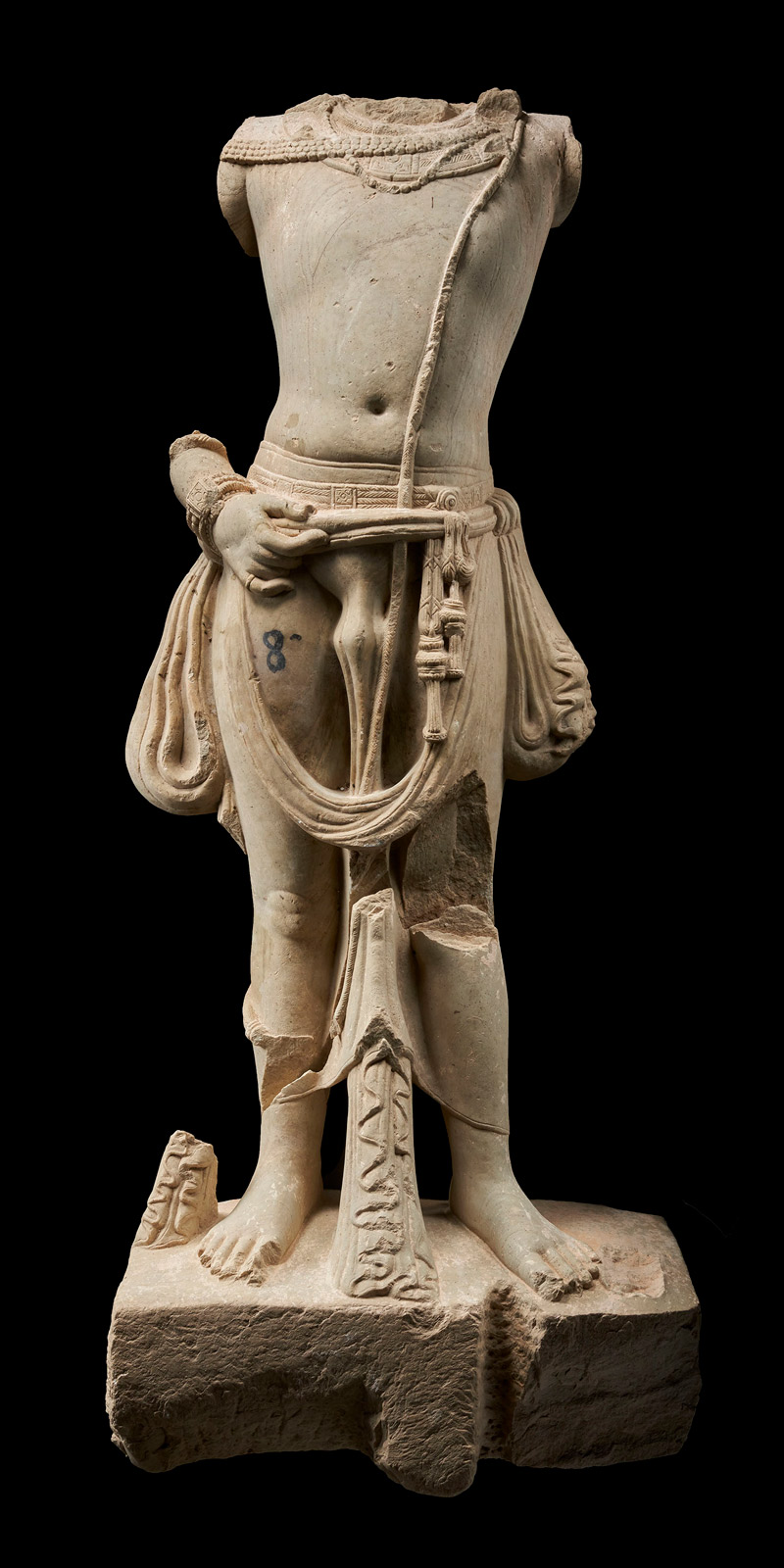In collaboration with a handful of Indian cultural institutions, the Met’s new exhibition traverses six centuries of Buddhist art
The Metropolitan Museum of Art’s Tree & Serpent: Early Buddhist Art in India, 200 BCE-400 CE is a mostly monochromatic exhibition; many of the pieces on display are sandstone reliefs taken from Buddhist shrines, called stupas, that were scattered across ancient India, filling the gallery with faded gray and beige tones. But upon closer inspection, the scenes etched into the rock depict a world that is easily imagined in verdant color.
Before the arrival of the historical Buddha, the religious landscape of ancient India was defined by its nature cults. Earthly figures were thought to be potent with sacred power: Spirits resided in rocks, rivers, and grass. When Buddhism first spread across the subcontinent, its art appropriated the visual language of the nature deities. The synthesis of these two spiritual traditions is central to Tree & Serpent. The exhibition’s title refers to the flora and fauna prominently featured in the aforementioned shrines: the wisdom tree under which Buddha achieved enlightenment, and the snake deities that served as the protectors of his relics.
The exhibition strikes a balance between indulging in the lush sacrality of Buddhist art and examining its significance to the temporal world. Many of the stupa fragments display singular, isolated scenes of worship: two men around a turning wheel, heavenly beings crowding a holy headdress, a king venerating an empty throne. The accompanying text explains how these pieces reflect a shifting atmosphere: Acanthus leaves in the artwork reflect thriving commerce between India and Rome, and the symbol of the spoked wheel emphasizes how India’s political imagery was becoming quickly assimilated with Buddhist thought.
Tree & Serpent is itself a reflection of a unique sociopolitical climate. The exhibition is a result of a years-long collaboration between the Met and various Indian museums, for the purpose of strengthening the cultural relationship between India and the United States. Narendra Modi, the current Prime Minister, spoke this past April at the Global Buddhist Summit in New Delhi, where he positioned himself as a champion of the faith. One could wonder if the emphasis—from both Modi and the Met—on Buddhism’s philosophy of peace and compassion obscures the reality of India’s current religious landscape, which is marked by a rising tide of Hindu nationalism and violence against religious minorities.
In light of these tensions, Tree & Serpent becomes a showcase of two nations: the mystical India that thrives in the Western imagination—a land of nature spirits and jubilant ceremonials—as well as the contemporary India, beset by religious violence belied by the beauty of its artworks. In both of these visions, the spiritual and the secular are inextricable: an interdependent relationship at the heart of the exhibition.
Tree & Serpent is on view at The Met Fifth Avenue through November 13.

























